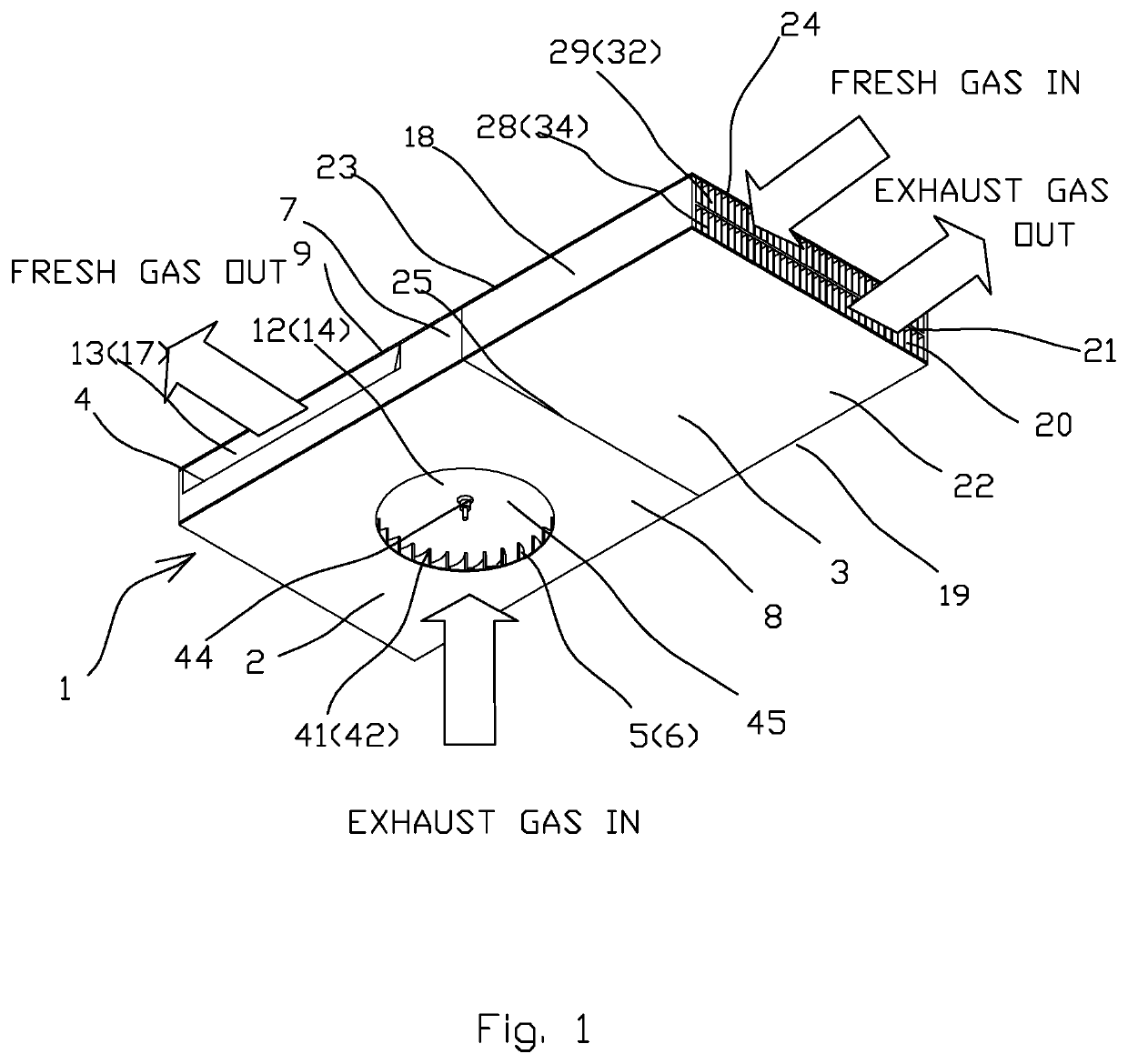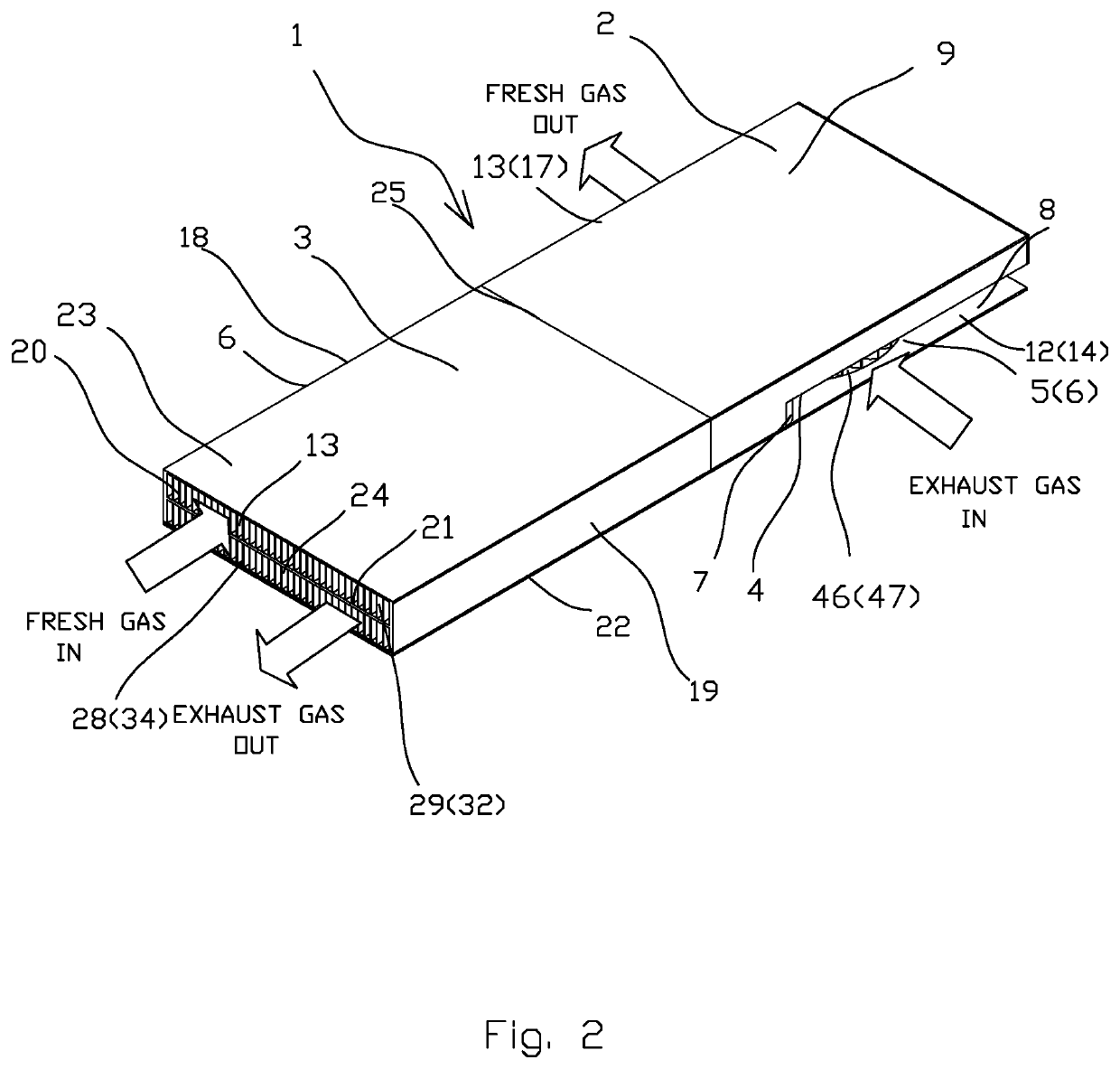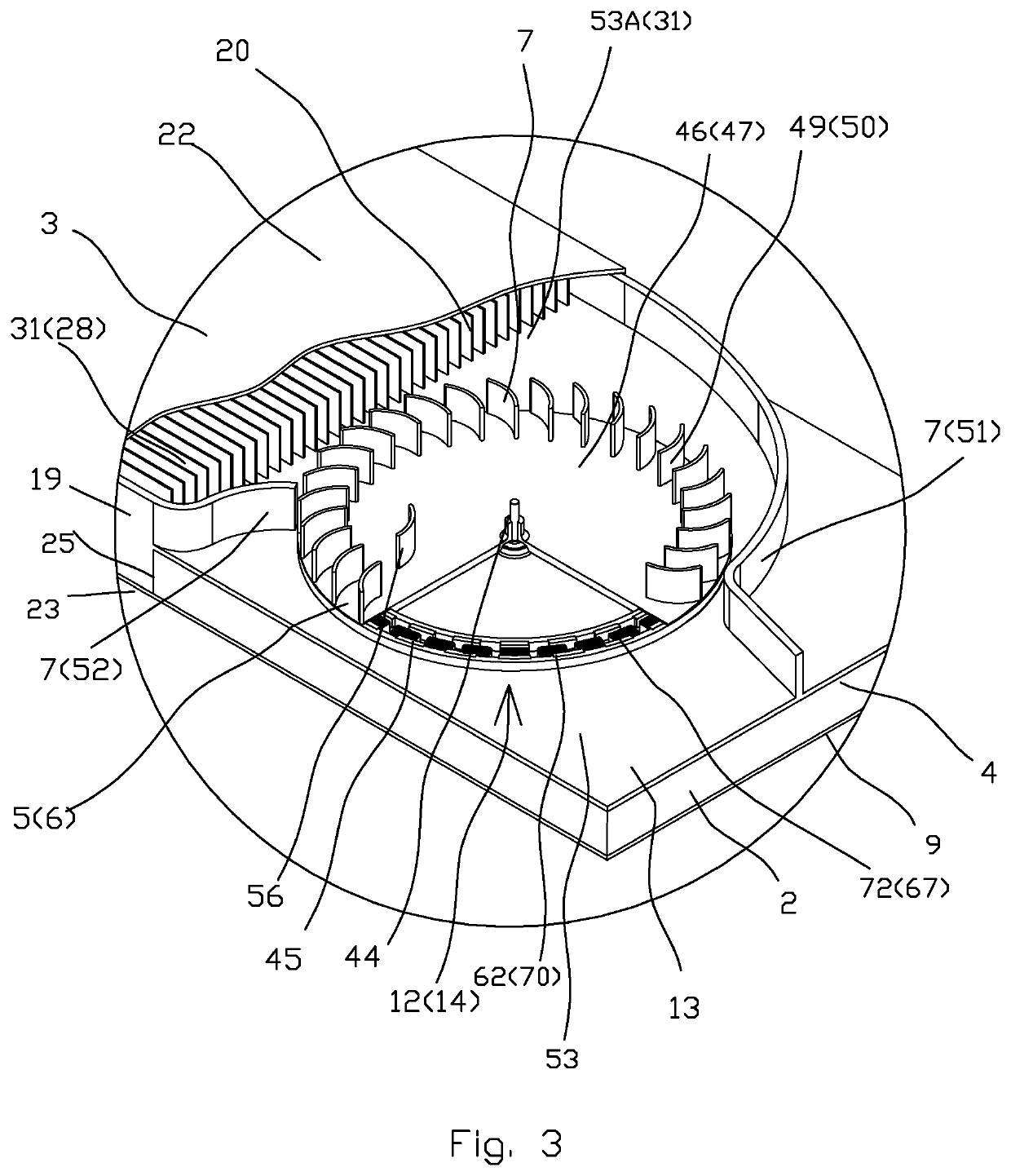A compact heat recovery ventilation system
a ventilation system and heat recovery technology, applied in ventilation systems, lighting and heating apparatuses, heating types, etc., can solve the problems of high sound level, contribute to the pressure drop of ventilation systems, and major problems of modern ventilation systems, and achieve the effect of easy integration
- Summary
- Abstract
- Description
- Claims
- Application Information
AI Technical Summary
Benefits of technology
Problems solved by technology
Method used
Image
Examples
Embodiment Construction
[0071]Preferred embodiment of the present invention will be described in detail below with reference to the accompanying drawings.
[0072]A compact heat recovery system 1 (FIGS. 1-23) comprises air module assembly 2 and heat exchanger assembly 3. Air module assembly 2 includes base plate 4, two radial blowers 5 and 6 airflow guides 7, two side panels 8 and 9. The base plate 4 located between radial blower 5 and 6, divides the airflow in two hydraulically isolated canals, exhaust gas canal 12 and fresh gas canal 13 with exhaust gas inlet 14, fresh gas inlet 15 and exhaust gas outlet 16, fresh gas outlet 17.
[0073]The heat exchanger assembly 3 comprises of heat exchanging elements 20, center plate 21 fixed with outside panels 22 and 23 and withe with heat exchanger sides 18 and 19. The center plate 21 divides openings of the ends 24, 25 of the heat exchanger assembly 3 for two hydraulically isolated flow conduits 28 and 29 with exhaust gas intake 31, fresh gas intake 32 and exhaust gas o...
PUM
 Login to View More
Login to View More Abstract
Description
Claims
Application Information
 Login to View More
Login to View More - R&D
- Intellectual Property
- Life Sciences
- Materials
- Tech Scout
- Unparalleled Data Quality
- Higher Quality Content
- 60% Fewer Hallucinations
Browse by: Latest US Patents, China's latest patents, Technical Efficacy Thesaurus, Application Domain, Technology Topic, Popular Technical Reports.
© 2025 PatSnap. All rights reserved.Legal|Privacy policy|Modern Slavery Act Transparency Statement|Sitemap|About US| Contact US: help@patsnap.com



